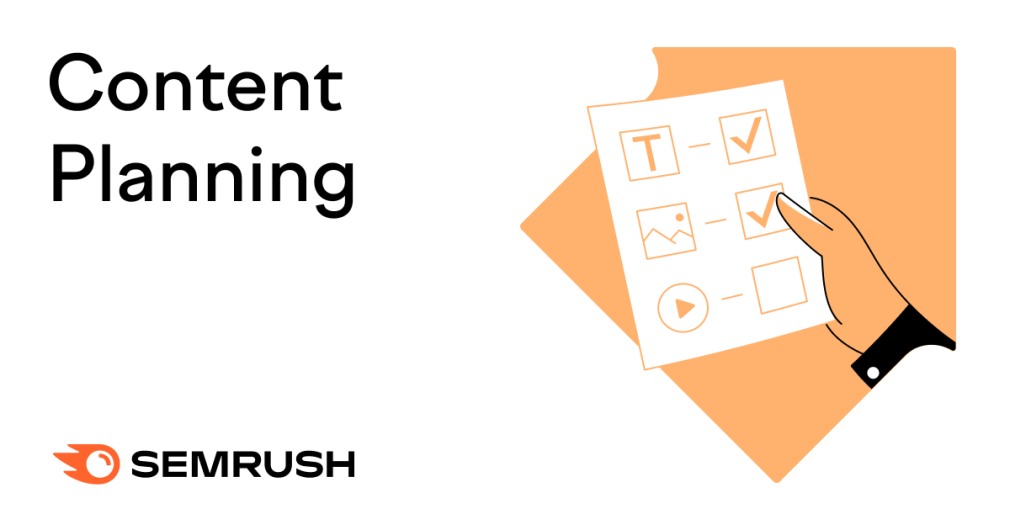What Is Content Planning?
Content planning is how you define what content you’re going to publish, when, and where.
With an effective content plan (sometimes referred to as a “content calendar” or “editorial calendar”), you can prioritize tasks, organize the creation process, and keep track of your progress.
Creating a content plan is a key step in any content strategy.
No matter the types of content you create (such as images, videos, or blog posts). Or the platforms you use to distribute it (such as Instagram, YouTube, or your blog).
Here’s how to create your content plan, step by step.
1. Build a Clear Content Strategy
A content strategy defines your goals, target audience, distribution channels, and other essential elements guiding your content marketing efforts. A content plan, on the other hand, is a written document to manage the execution of this strategy.
It’s easier to understand with an example:
Say you own an ecommerce website specializing in fitness products.
A (very simplified) content strategy would state that you’re going to publish five videos per week. With a mix of workout tutorials and product reviews.
Your content plan, on the other hand, would say that on Dec. 3, you want to publish a YouTube video analyzing the best running shoes between $50 and $100.
As you can see, your strategy sets the guidelines that shape your content plan. That’s why strategy must always go first.
To have a solid strategy, you need to have:
- Measurable goals
- A good understanding of your audience
Now that you know what a content pan is, let’s analyze these two elements.
(If you already have measurable goals and a clear picture of your customers, jump to step #2).
Set Goals
Content marketing must have precise goals. Because there’s no point in creating content if you don’t know what you want to achieve with it.
Remember that these goals have to be SMART. This is an acronym that stands for:
- Specific
- Measurable
- Actionable
- Relevant
- Time-bound
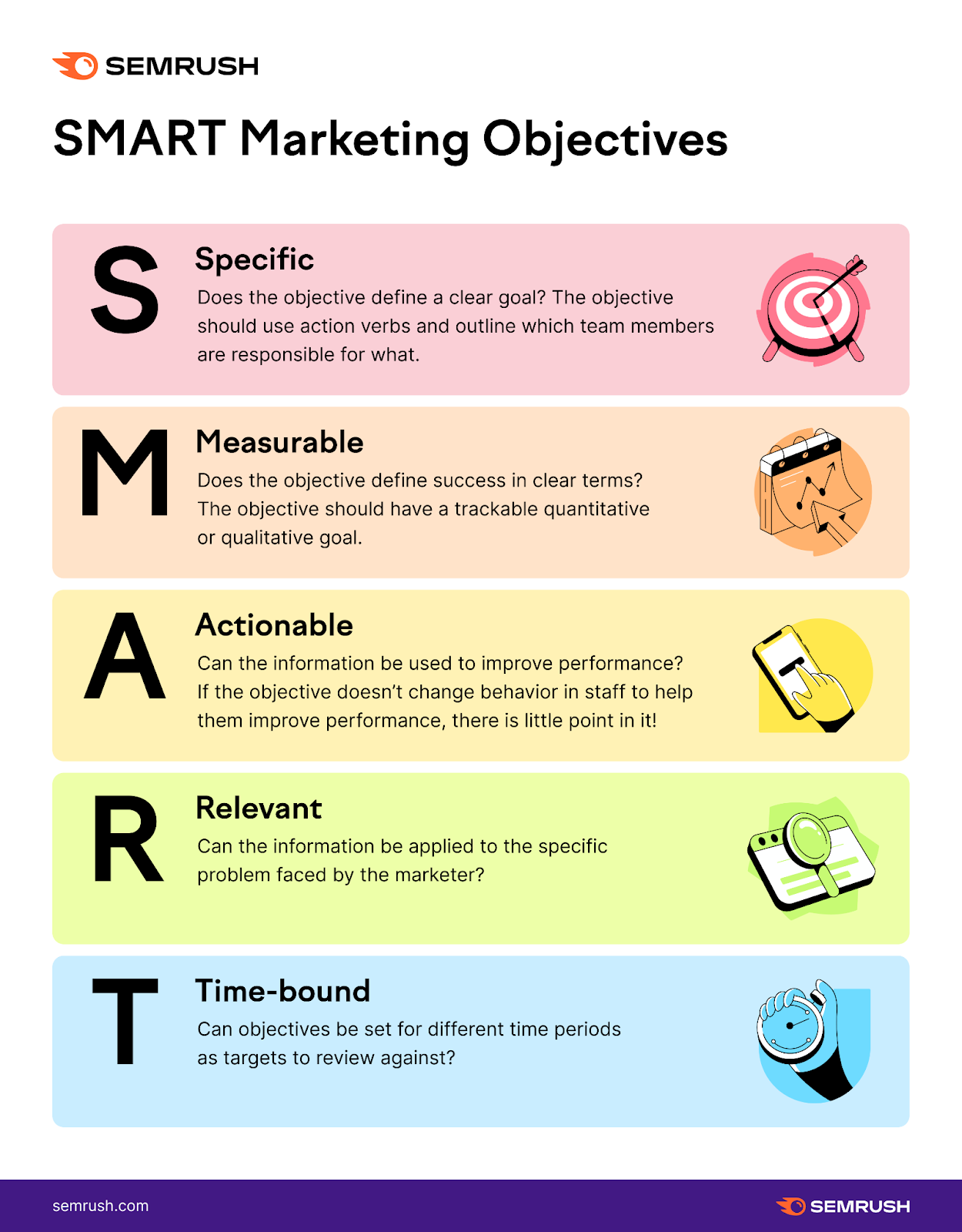
Some examples of SMART content marketing goals are:
- If you’re updating blog articles to improve your SEO and bring more users to your site: Double organic traffic to our blog by September 2023 by updating five posts per week.
- If you’re organizing a series of webinars to improve customer retention: Reduce churn by 5% during Q3 and Q4 of 2023 by organizing two product-focused webinars per month.
- If you’re creating new YouTube videos to promote your products: Increasing ecommerce sales of kitchen products by 15% in Q2 by publishing two YouTube videos per week.
Understand Your Audience
Audience research is essential if you want to create content that meets your customers’ needs.
Here’s what you need to know about your customers:
- The topics they’re interested in
- The channels they use (Instagram, Google Search, Apple podcasts, etc.)
- The formats they prefer (videos, blog posts, podcasts, etc.)
Pro tip: You can use our free buyer persona template to help you put this information into writing!
How to Perform Audience Research
Feel like you don’t know enough about your audience to create effective content plans? Start with audience research. There are many ways to perform it.
Two quick and effective options are:
- Reaching out to your customers or followers
- Analyzing your data
Talking to your customers (or followers) is the best way to understand the content they’d find valuable.
You can call them or send a personal email. Or you can save time by using surveys.
Free tools like Google Forms, SurveyMonkey, Qualtrics, or Typeform make it easy to create customer surveys.
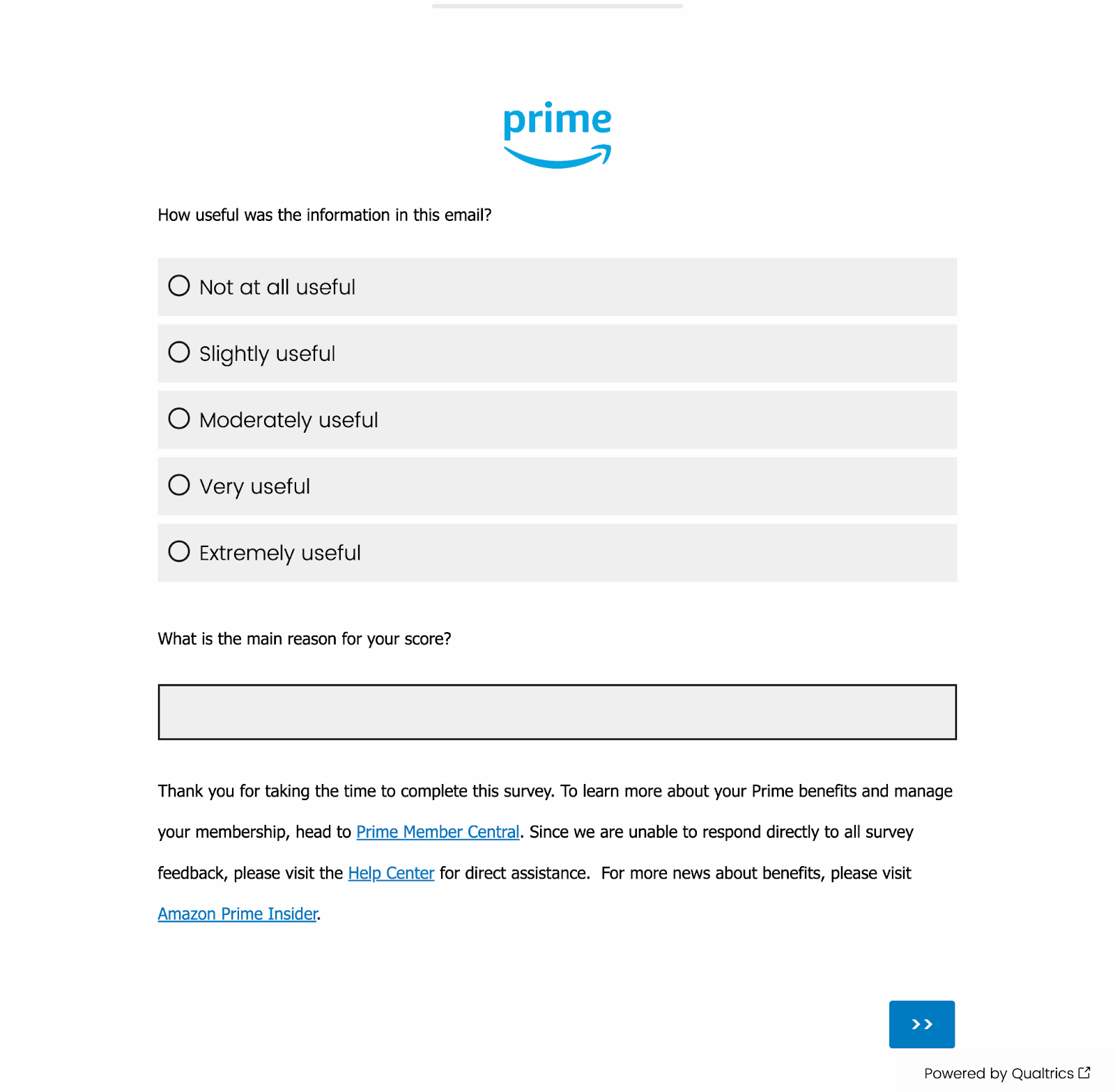
Some social media platforms, such as Instagram, YouTube, and LinkedIn, also offer features to create your own polls.

Side note: You can thank those who reply with a reward, like a raffle entry, discount code, or a free trial.
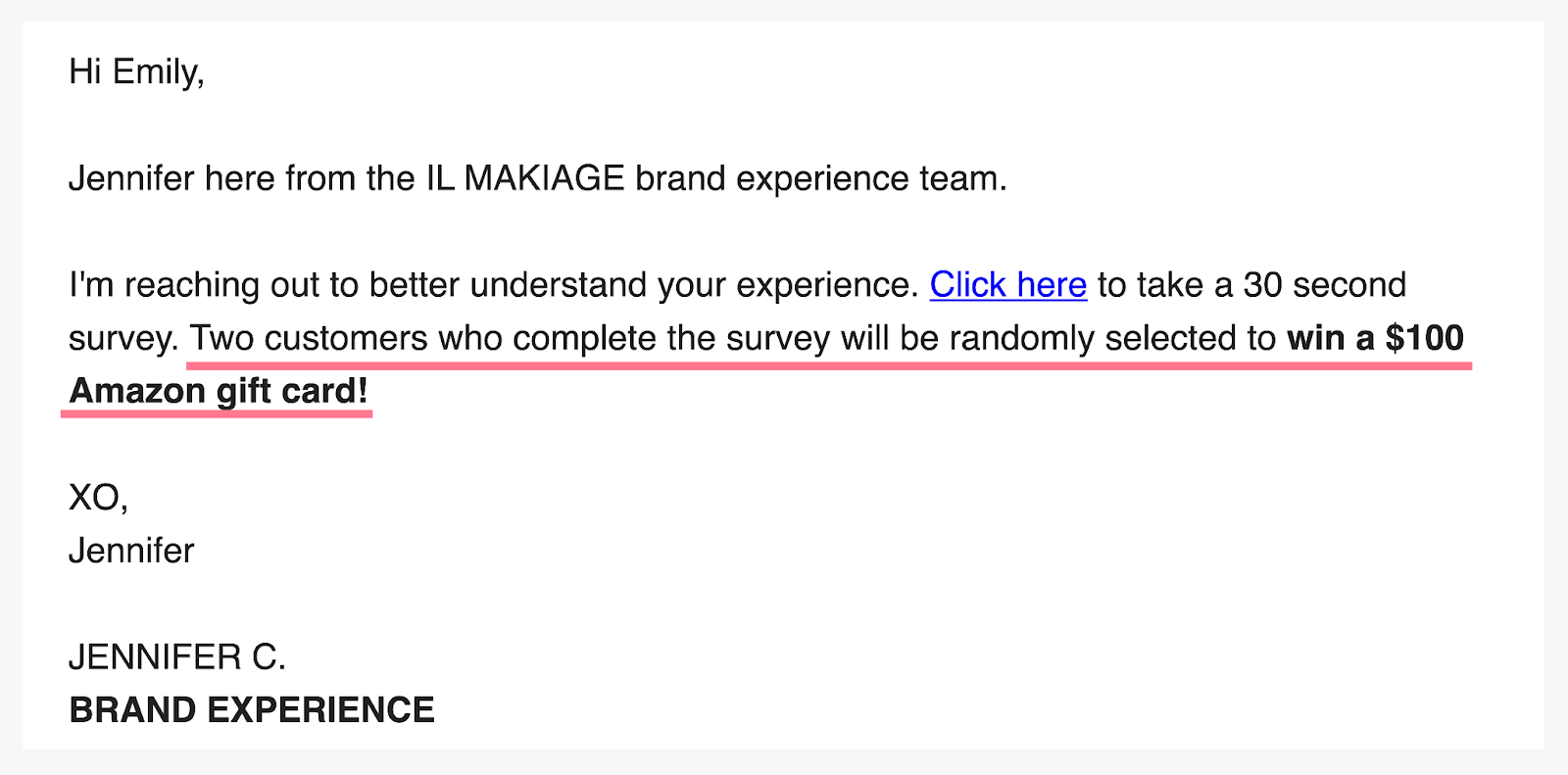
Always remember to check your customer data for insights about your audience.
With Google Analytics 4, for example, you can see information about your website’s users.
Click on “Reports” in the left-side navigation menu.
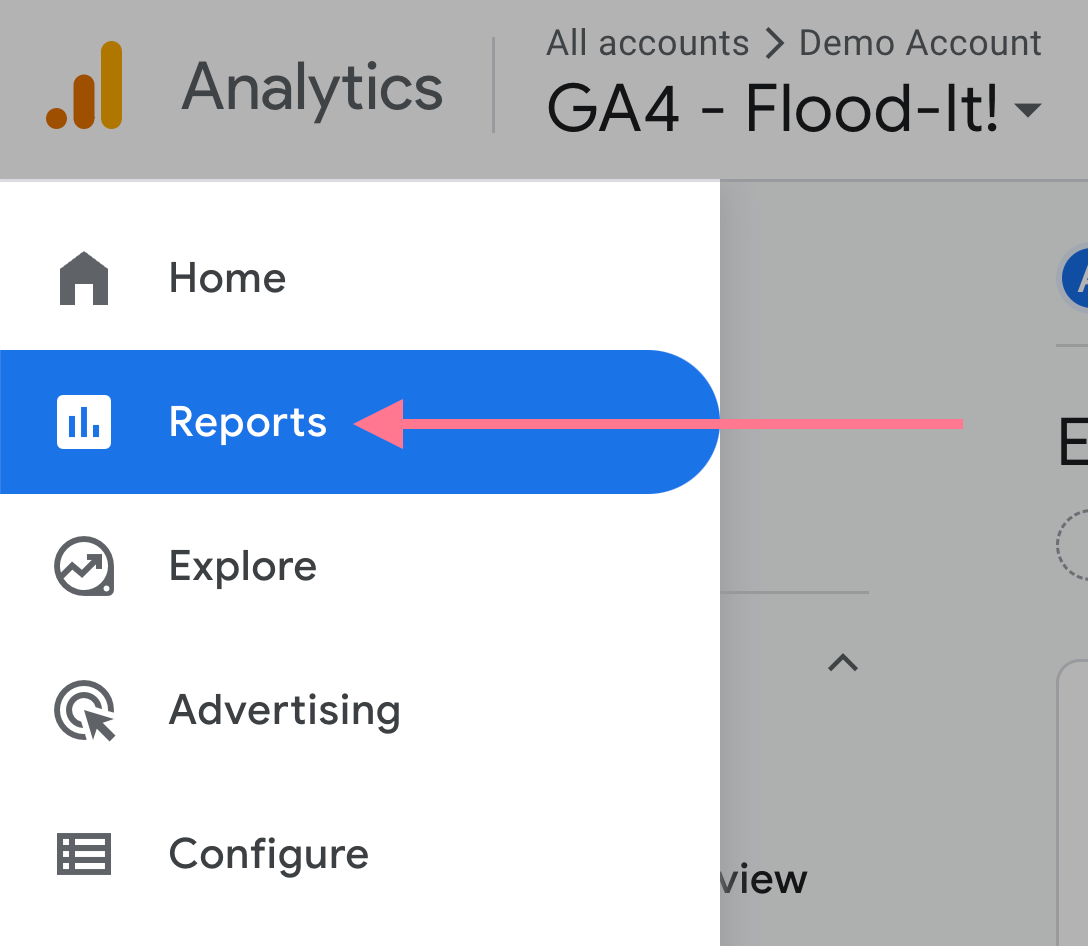
Then, “Demographics,” and “Demographics overview.”
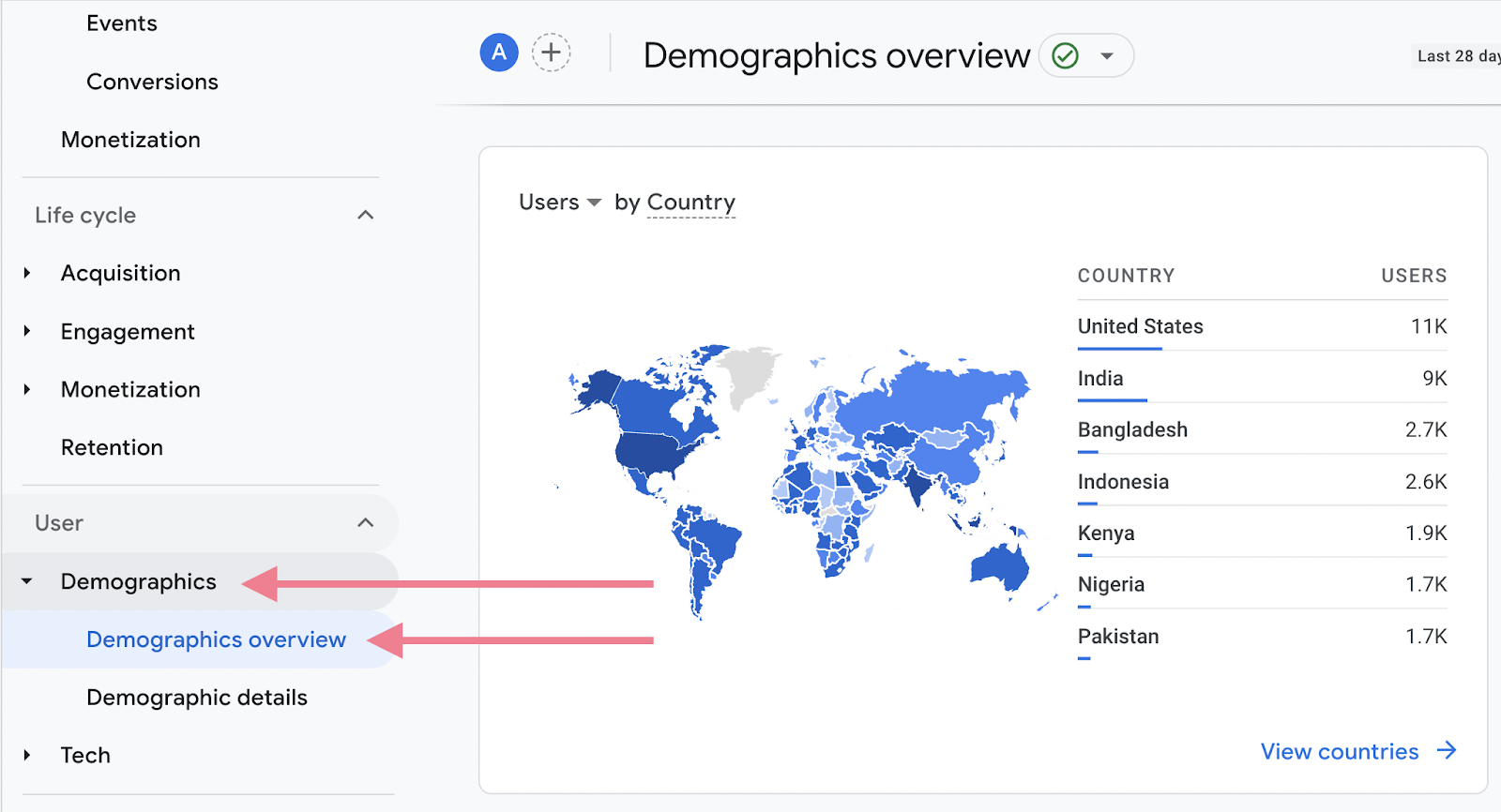
You’ll be able to see your audience’s:
- Location
- Age
- Gender
- Interests
- Language
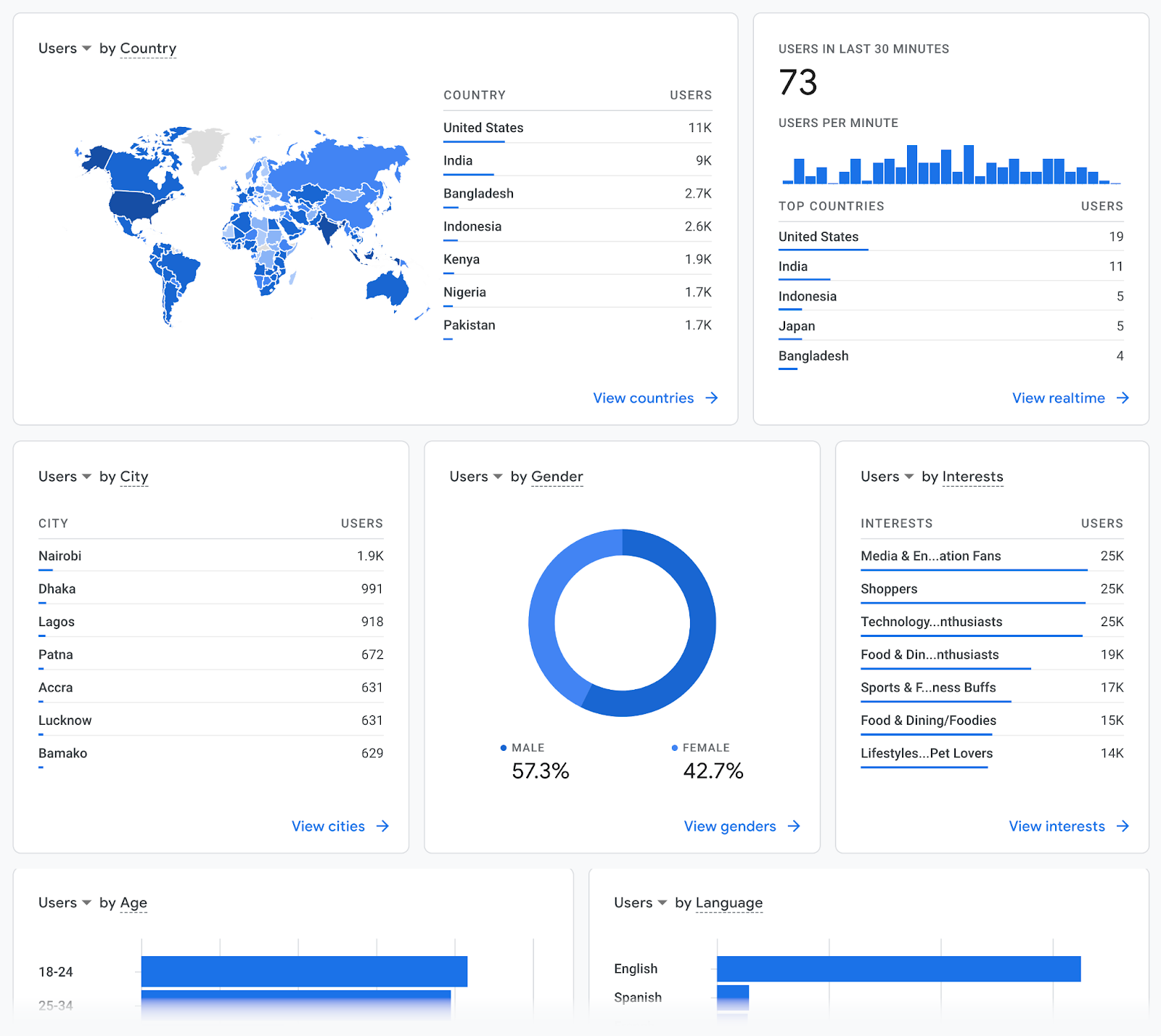
If the charts don’t show any data, go to “Admin,” > “Data Settings” > “Data Collection.”
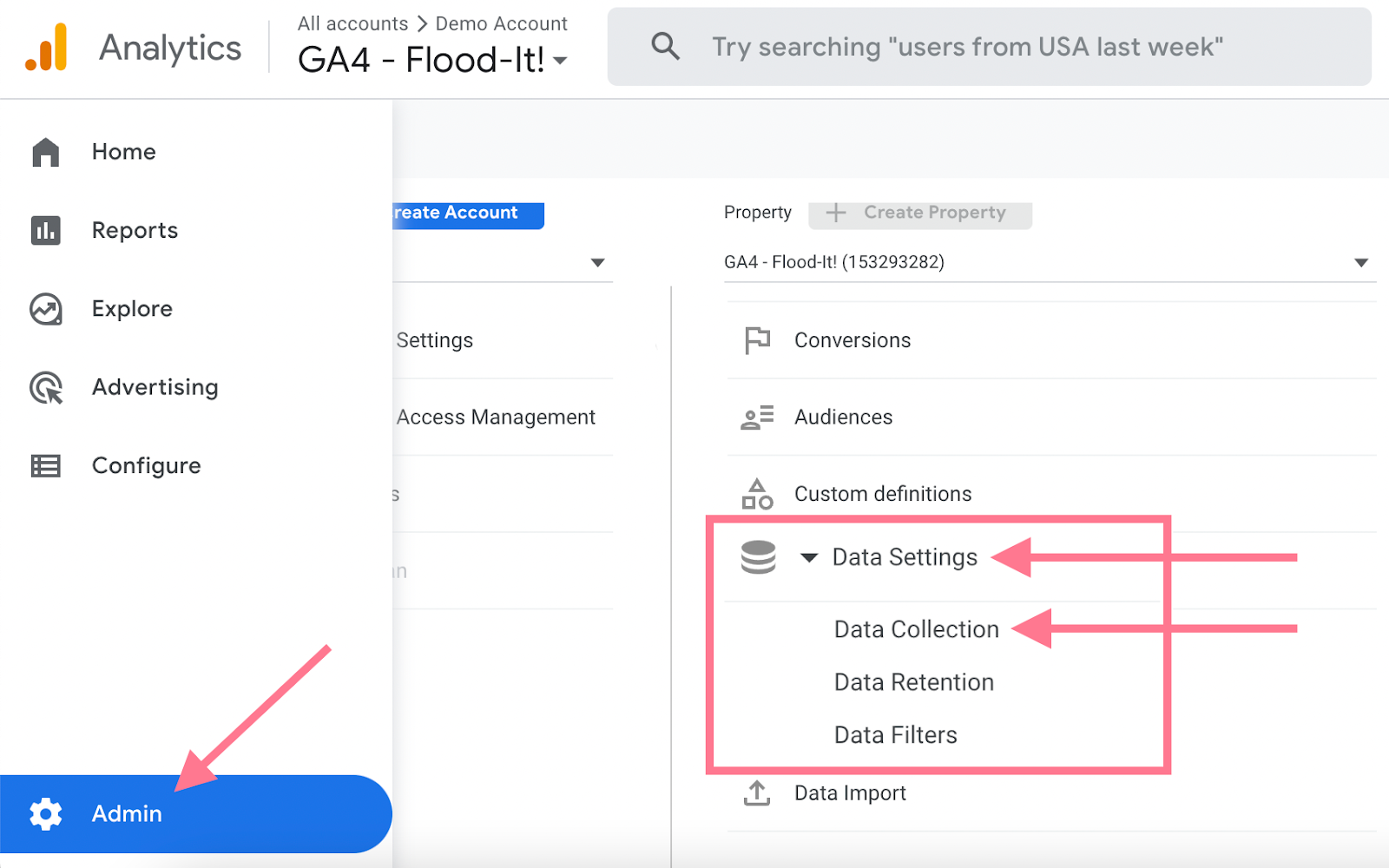
And click on the toggle beside “Enable Google signals data collection.”
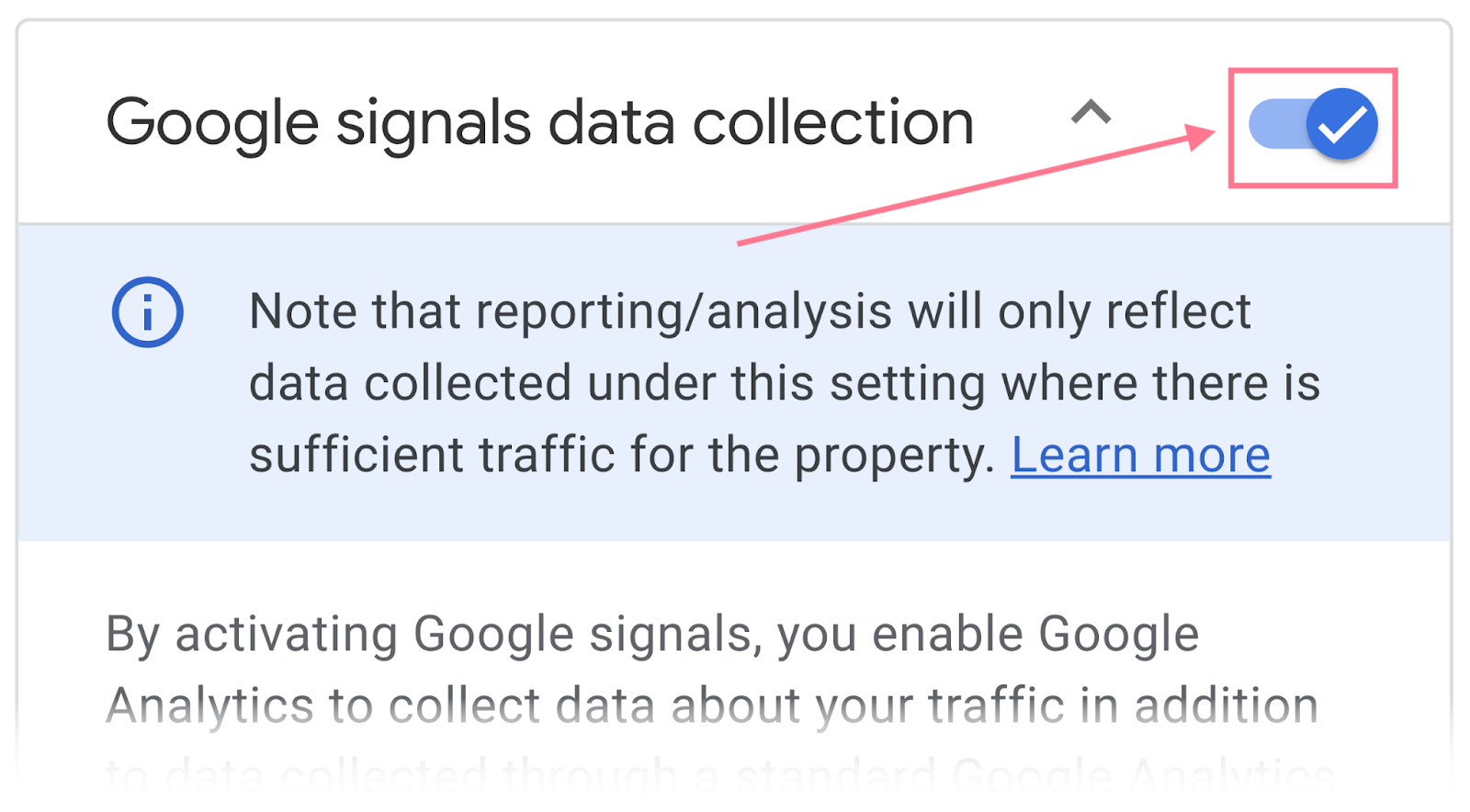
If you’ve never set up Google signals data collection before, then click on the “Get started” button, instead, and follow the prompts that appear.
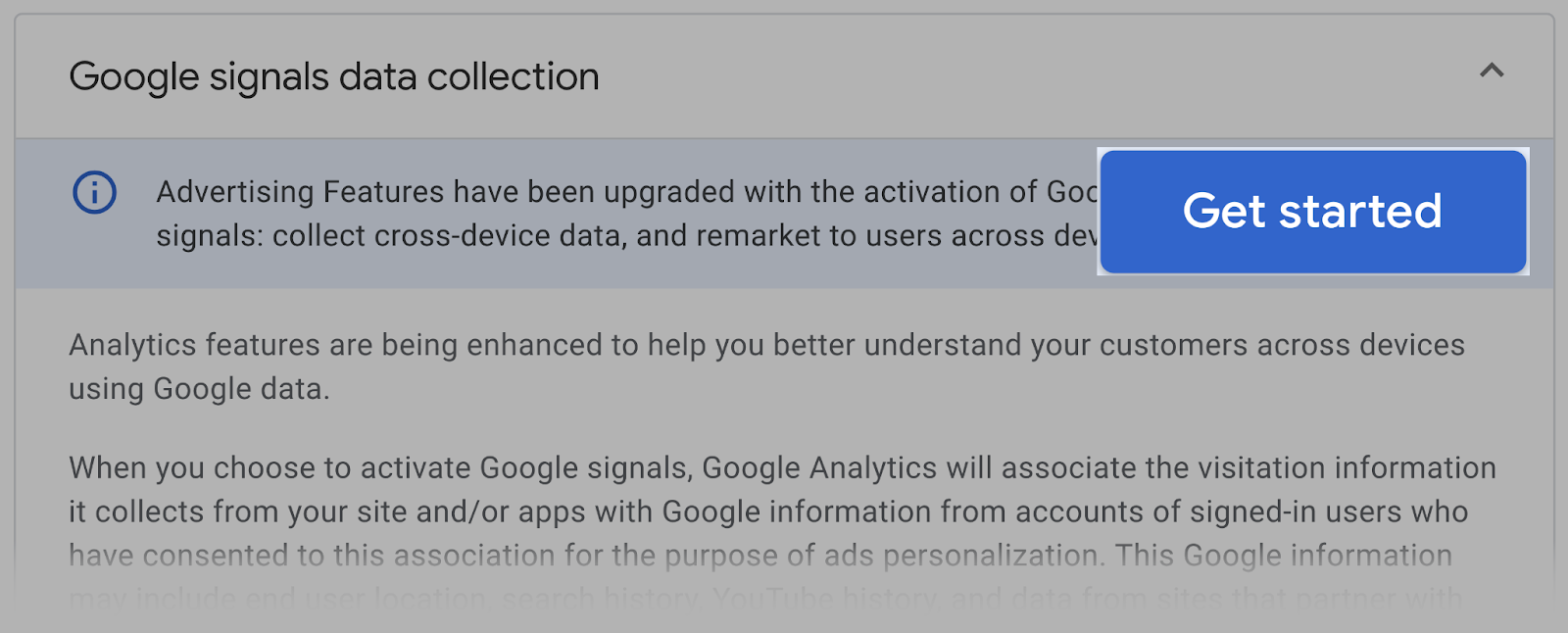
Side note: If you’re still using Universal Analytics, you’ll find this information under “Audience” > “Demographics,” “Interests,” and “Geo.”
Social media platforms also give you valuable data about your followers. Each social media platform is different, but most give you access to your users’ demographics (such as age and gender).
This is an example taken from Instagram Insights. (You’ll be able to access this feature with an Instagram business account.)
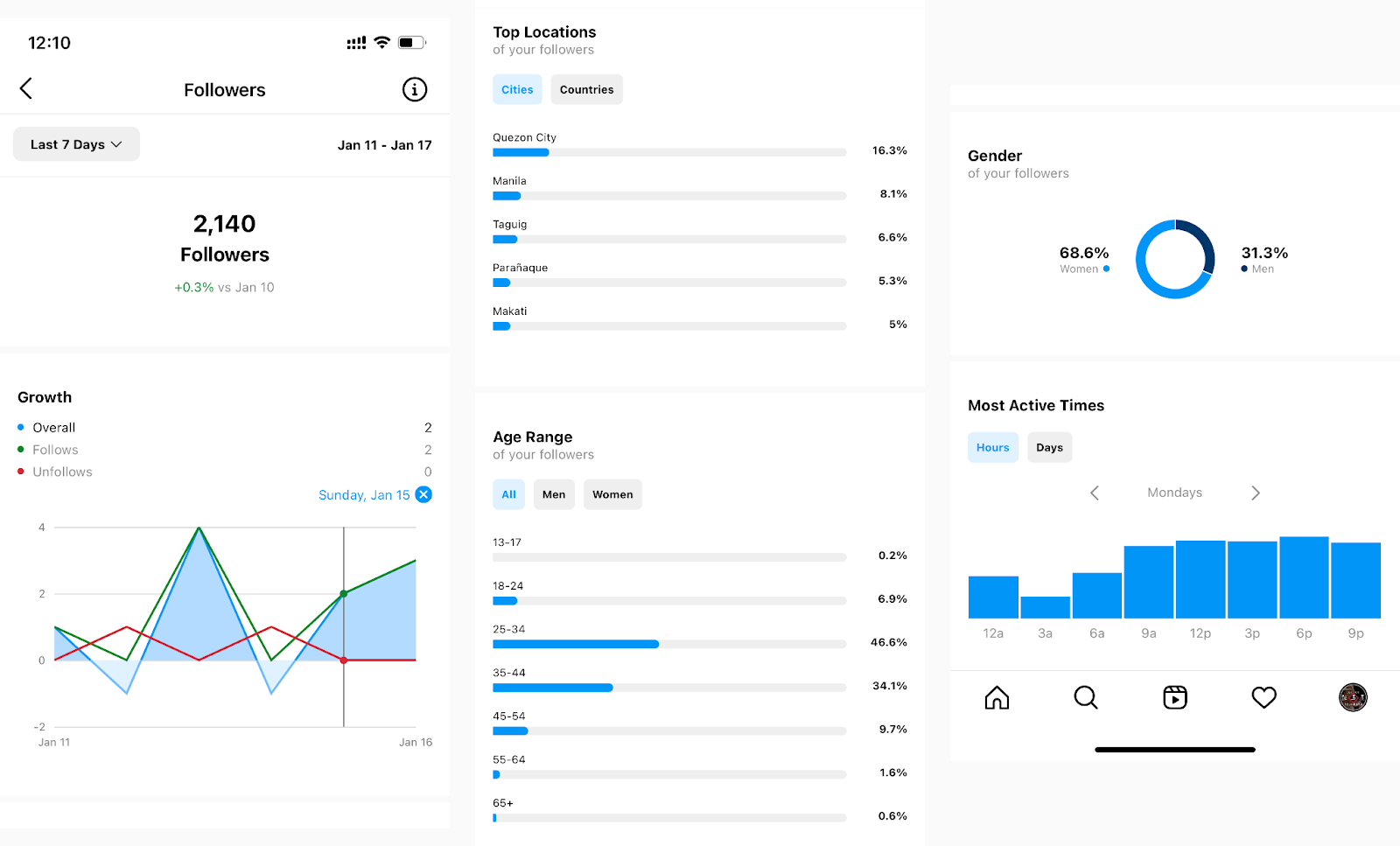
2. Create Your Template
You can create a content plan with a simple spreadsheet. Or you can go one step further and use a project management tool.
There isn’t a one-size-fits-all solution when it comes to planning content. Every company’s content plan will look different.
Still, some elements are crucial.
For every content piece, you should include, at least:
- Title
- Format (e.g., 30-second video, blog article, ebook, etc.)
- Person in charge
- Publication date
- Status
Those are the basics.
But each type of content has specific requirements, and you need to adapt content plans to those needs.
Let’s see some content plan examples and what they should include:
For Social Media
If you’re posting content on social media, your content plan should include:
- Caption
- Image or video file
- Hashtags
- Link
- Date & time (including time zone)
- Tagged users
Those elements are applicable to most of the leading social media platforms.
However, each of these platforms is different, and you’ll need to adapt your content plan to them.
For example:
- For YouTube, you could add a video thumbnail
- For Instagram, you could add a list of products to tag
And so on.
Learn more about crafting a content strategy for social media.
For a Blog
If you’re publishing blog articles as part of your content plan, include the following:
- Title
- Type of article (listicle, how-to, etc.)
- Author
- Title tag and meta description
- Primary keyword
- Secondary keywords
- CTAs (calls to action)
For Podcasting
If your content plan includes creating podcasts, you could include:
- Title and topic
- Guest’s name, bio, and contact information
- Link to the script
- Date and time of recording
- Original audio file
- Edited audio file
This is an example of a content plan created with Semrush’s Marketing Calendar tool:
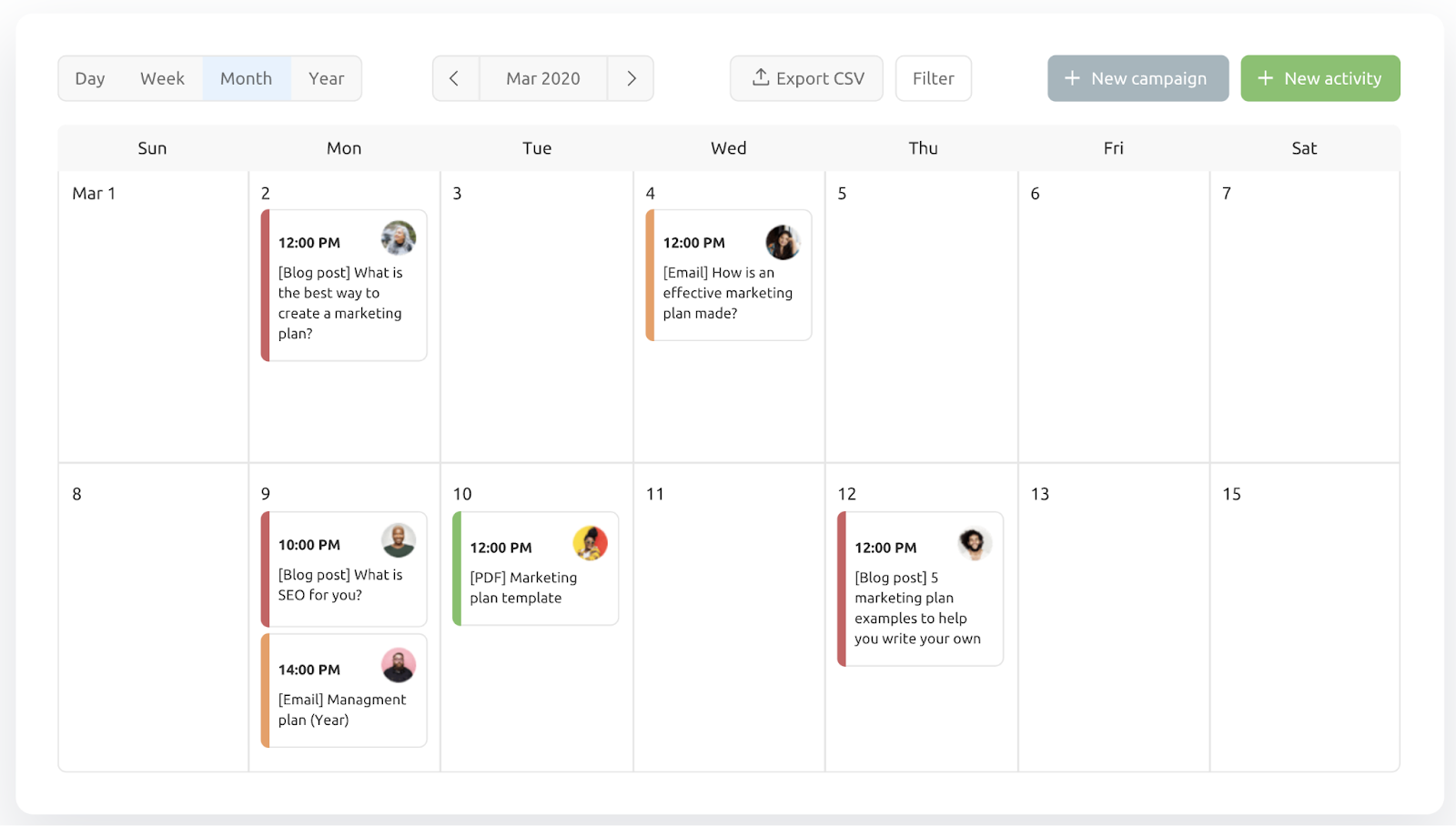
With this tool, you can add information about each content piece, attach files, and assign tasks and deadlines to users on your team.
Just hit “New activity” > “Open in Editor” in the top right corner of your screen. A form will pop up. It allows you to create a new activity and fill in all the important details.

3. Find the Right Topics
Sometimes, finding new, original topics to engage your target audience can be challenging.
Especially if you’re a social media manager and need to publish several posts every week.
Luckily, some tools can help.
Semrush’s Topic Research tool is an excellent source of ideas.
Let’s say you own a pet food delivery service and are looking for content inspiration.
You just need to go to the tool and type in a topic related to your business. Like “best dog food for senior dogs.”
Then, hit the “Get content ideas” button.
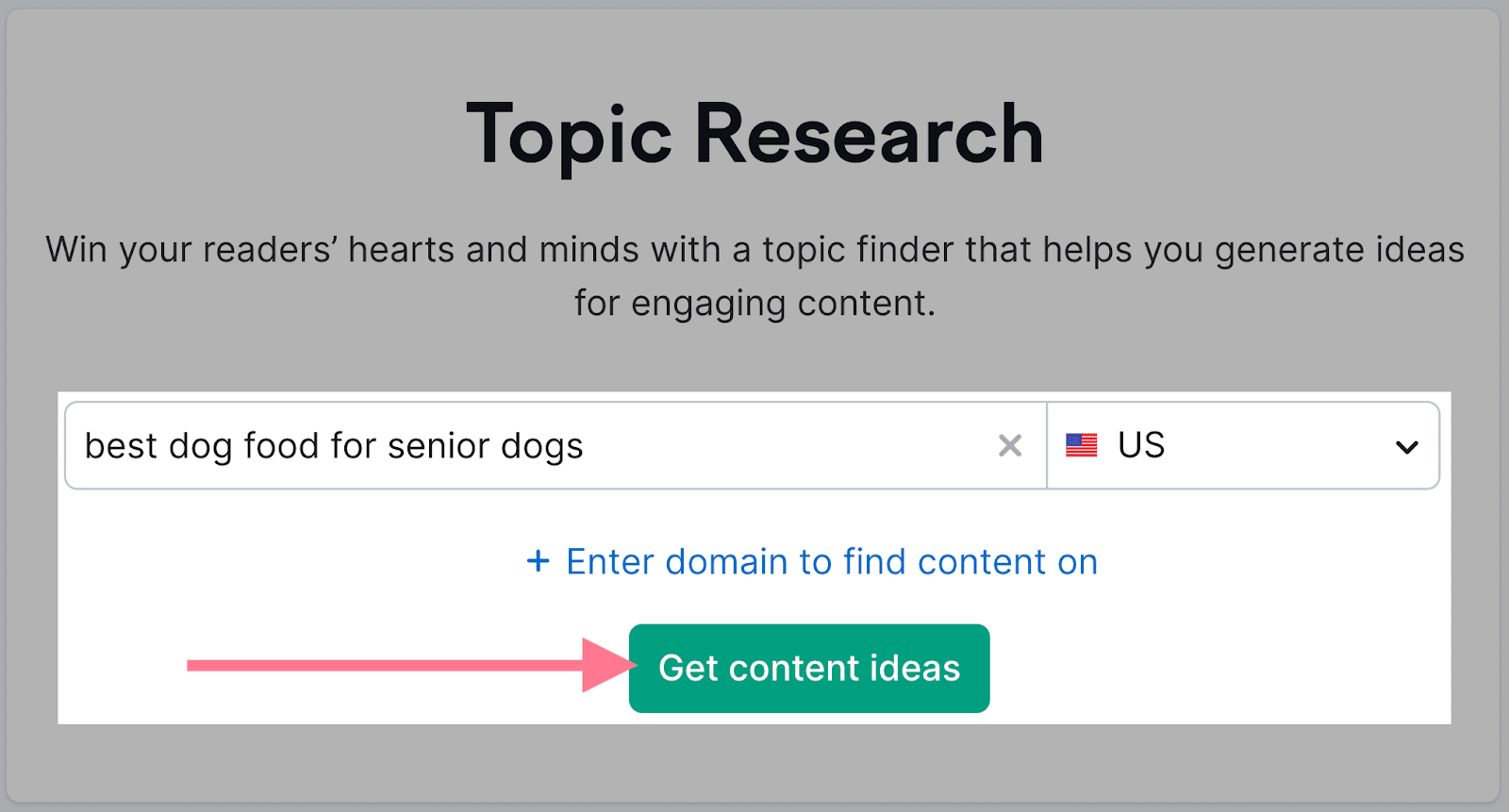
You’ll get a list of related topics:
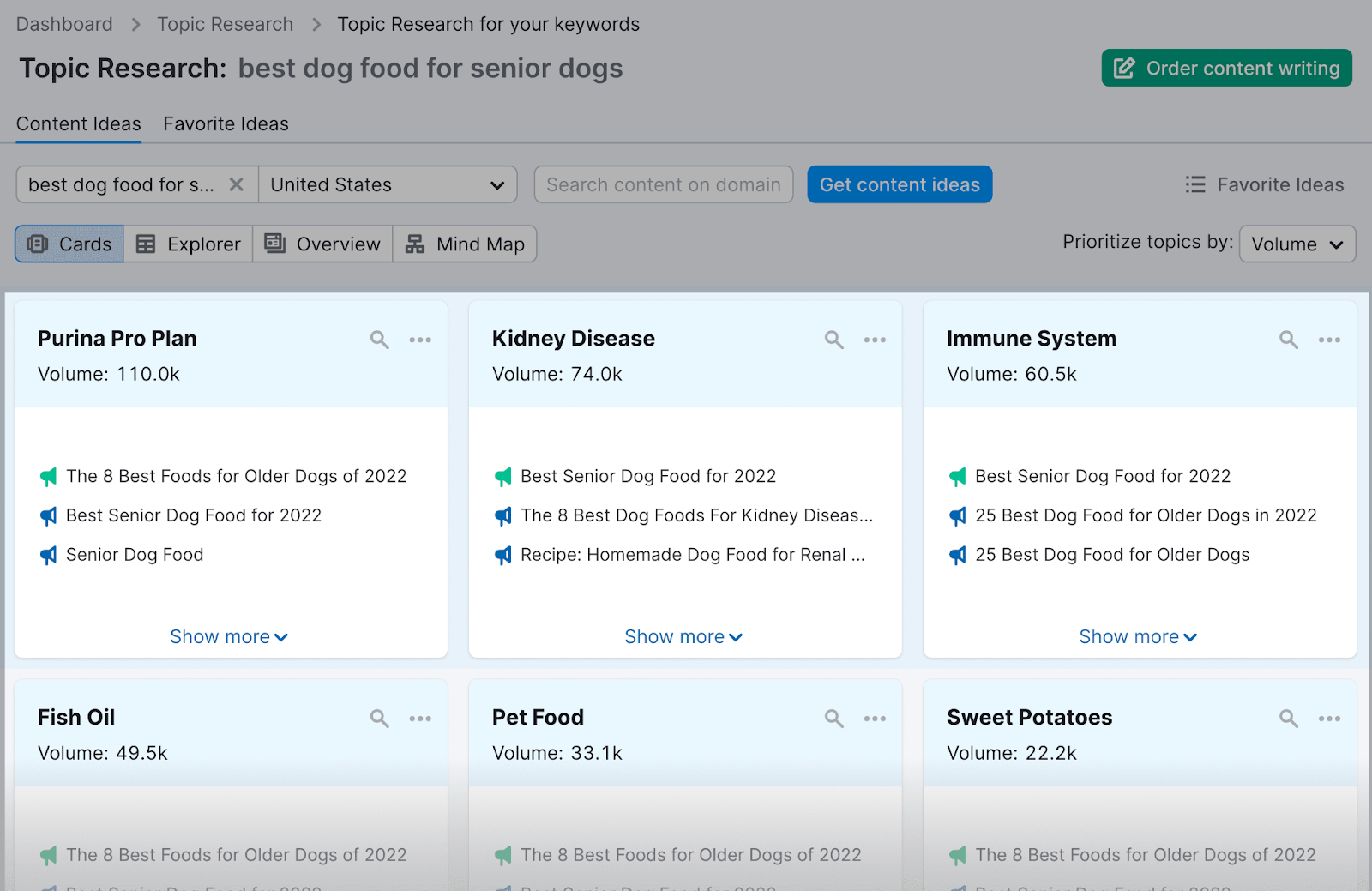
If you click on one of them, it will display a selection of articles ranking well on Google for that topic, under “Headlines.” As well as related searches and questions.
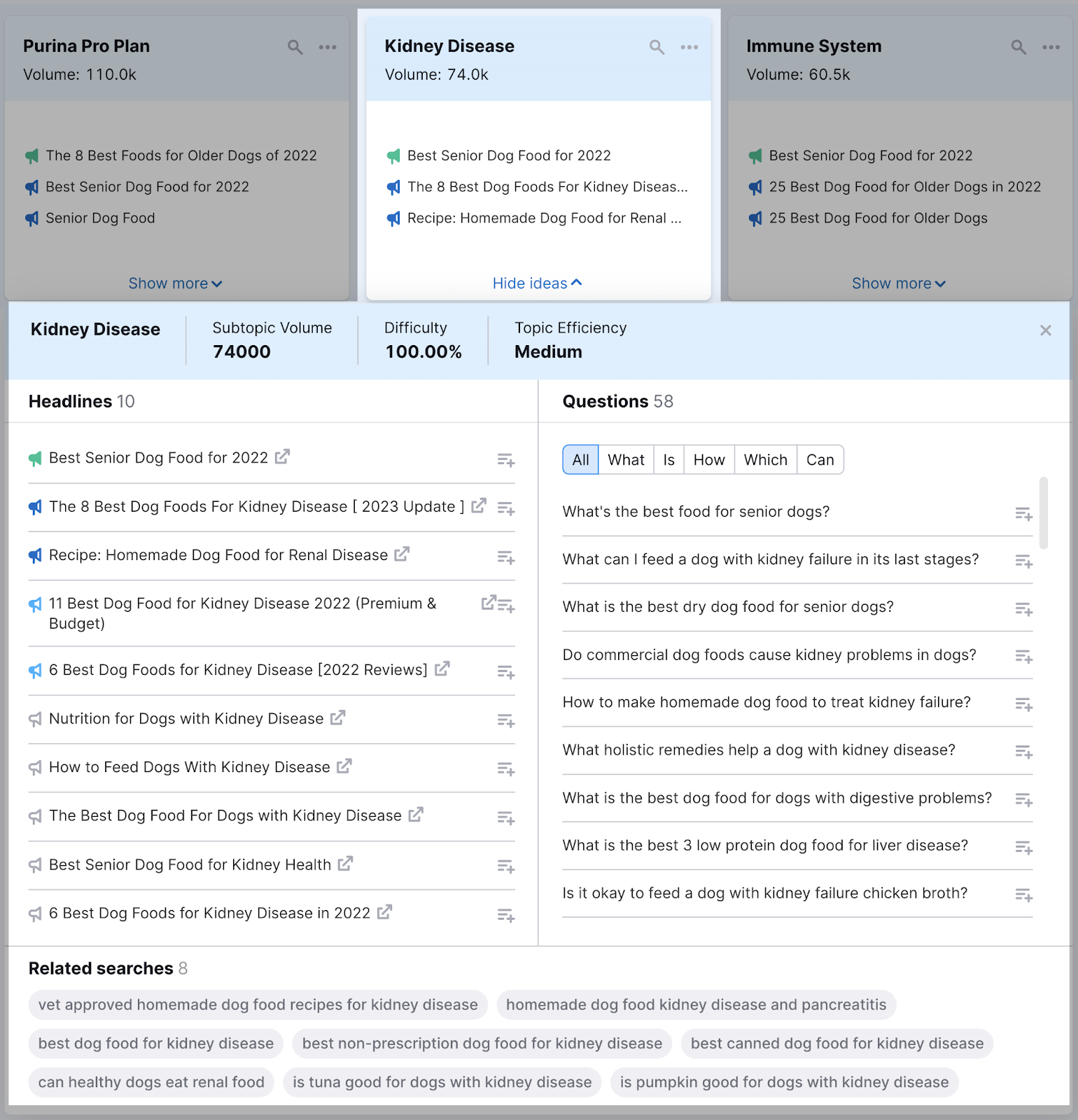
The “Subtopic Volume” (also referred to as “search volume”) is the average number of times a word or phrase is searched for on Google in a month.
The higher the volume, the higher the interest in the topic.
All this information is based on Google searches and can be helpful if you create blog articles.
It goes beyond blog articles, though:
Search volume shows interest in a topic.
A user looking for something on Google likely wants to learn about it through other formats as well. Like social media posts, ebooks, or podcasts.
So, once you know the topics your customers are interested in, you can choose the type of content you want to produce.
You can create a blog post, a video for Instagram reels, or an ebook. It depends on your content strategy.
You can even create different types of content about the same topic.
Let’s say you find out that users are looking for “kitchen decor trends” for the upcoming year.
First, you can rely on your subject matter expertise to draft a list of trends.
Then, you can create several Instagram posts out of it (one per trend), a TikTok video, and a blog article.
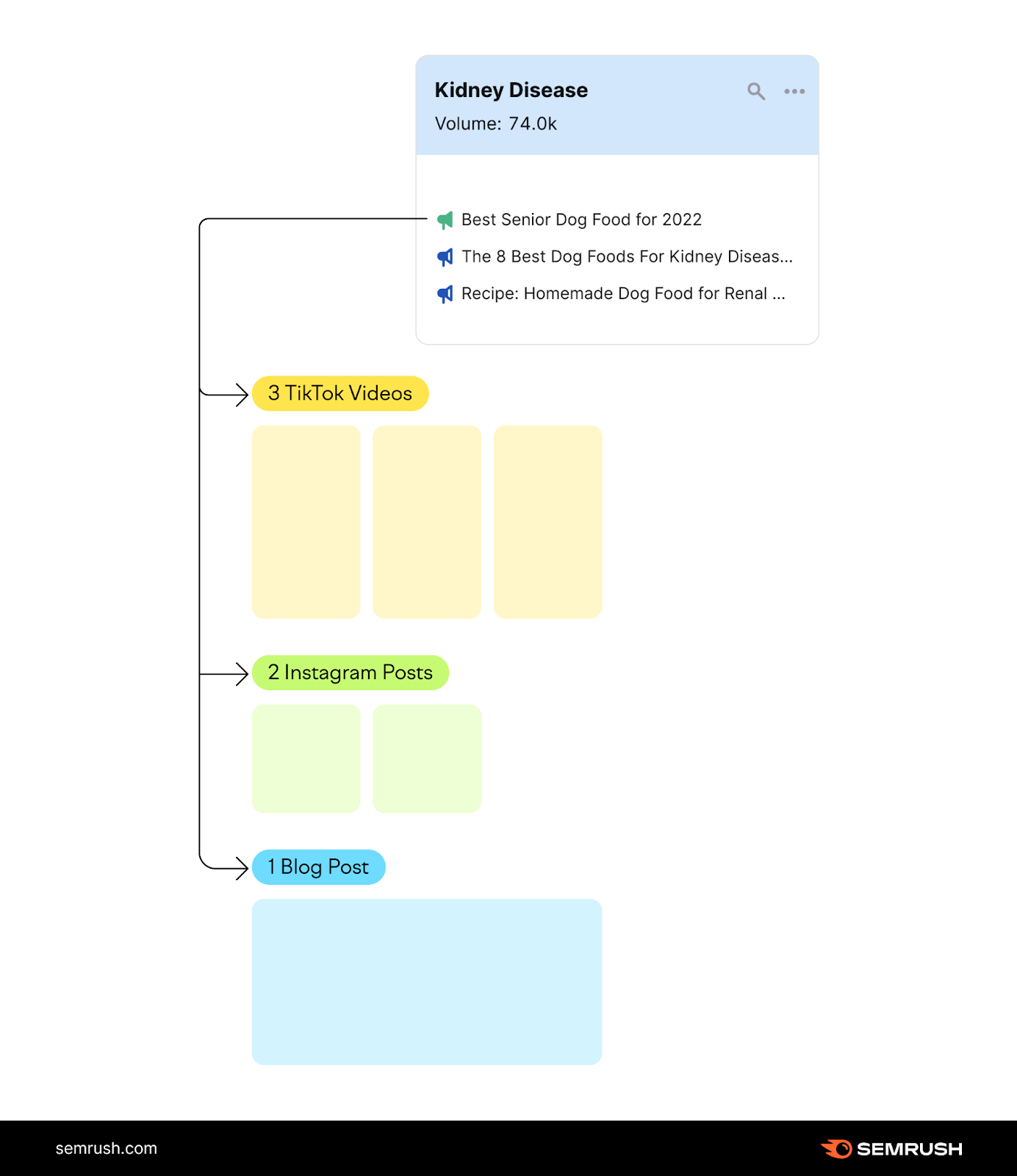
You can “recycle” the same information into different formats. This is called “content repurposing.”
You can also check the words and phrases (keywords) users search for on Google.
Semrush offers many ways to find keyword ideas.
For instance, with Semrush’s Organic Research tool, you can look at the keywords your competitors rank for on Google.
If you’re interested, check out this keyword research guide.
You can also find new topic ideas for your content plan on social media. More specifically, on your competitors’ social media profiles.
You can do so with Semrush’s Social Media Tracker.
This tool tracks social media accounts, growth, and engagement levels for both you and your competitors. Once you add a social profile to your campaign, the tool collects data from the previous 60 days (30 days for YouTube).
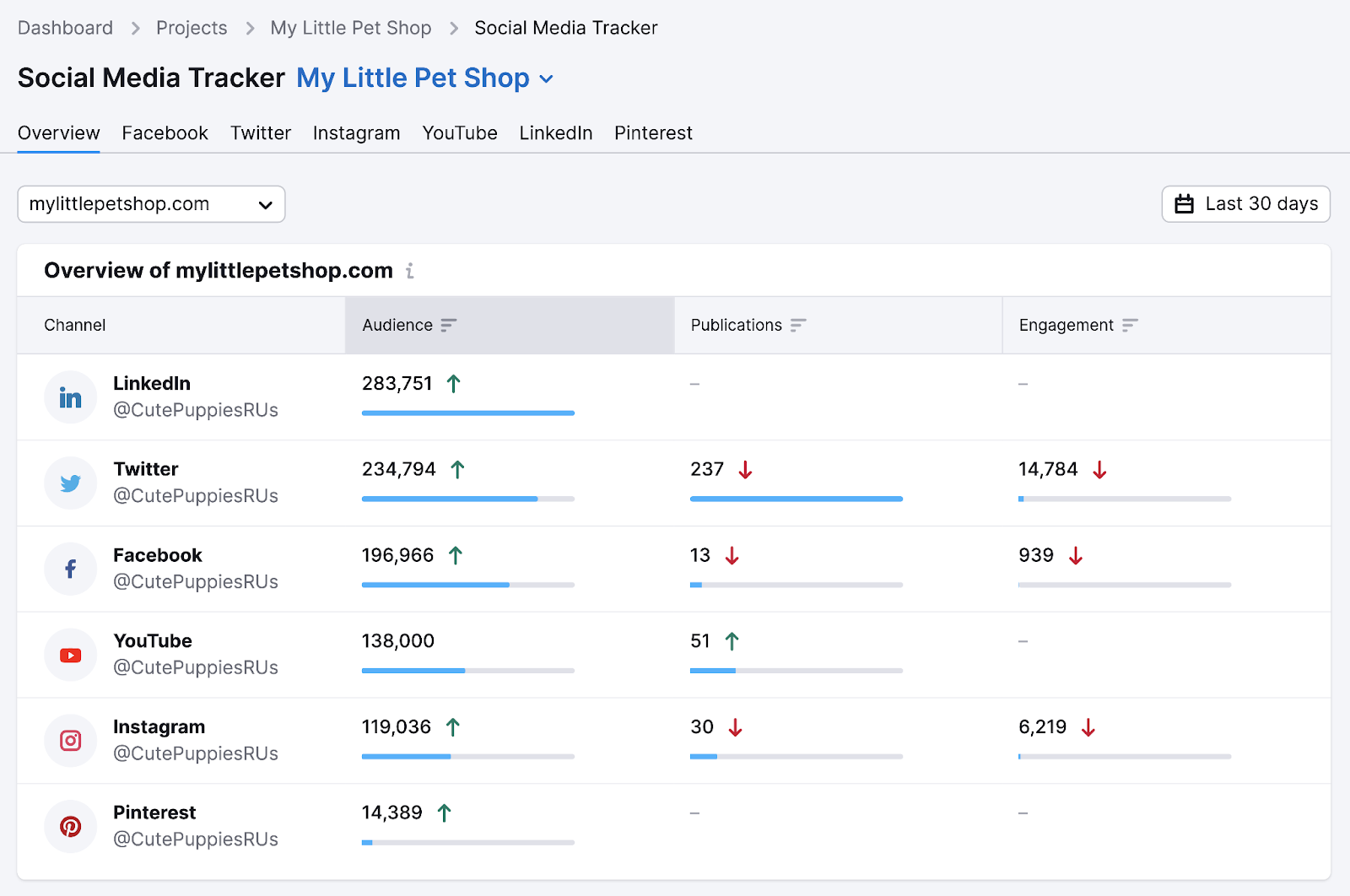
The “Top Content by Channel” section shows the top-performing pieces of content in your niche. You can use them as inspiration for your own posts.
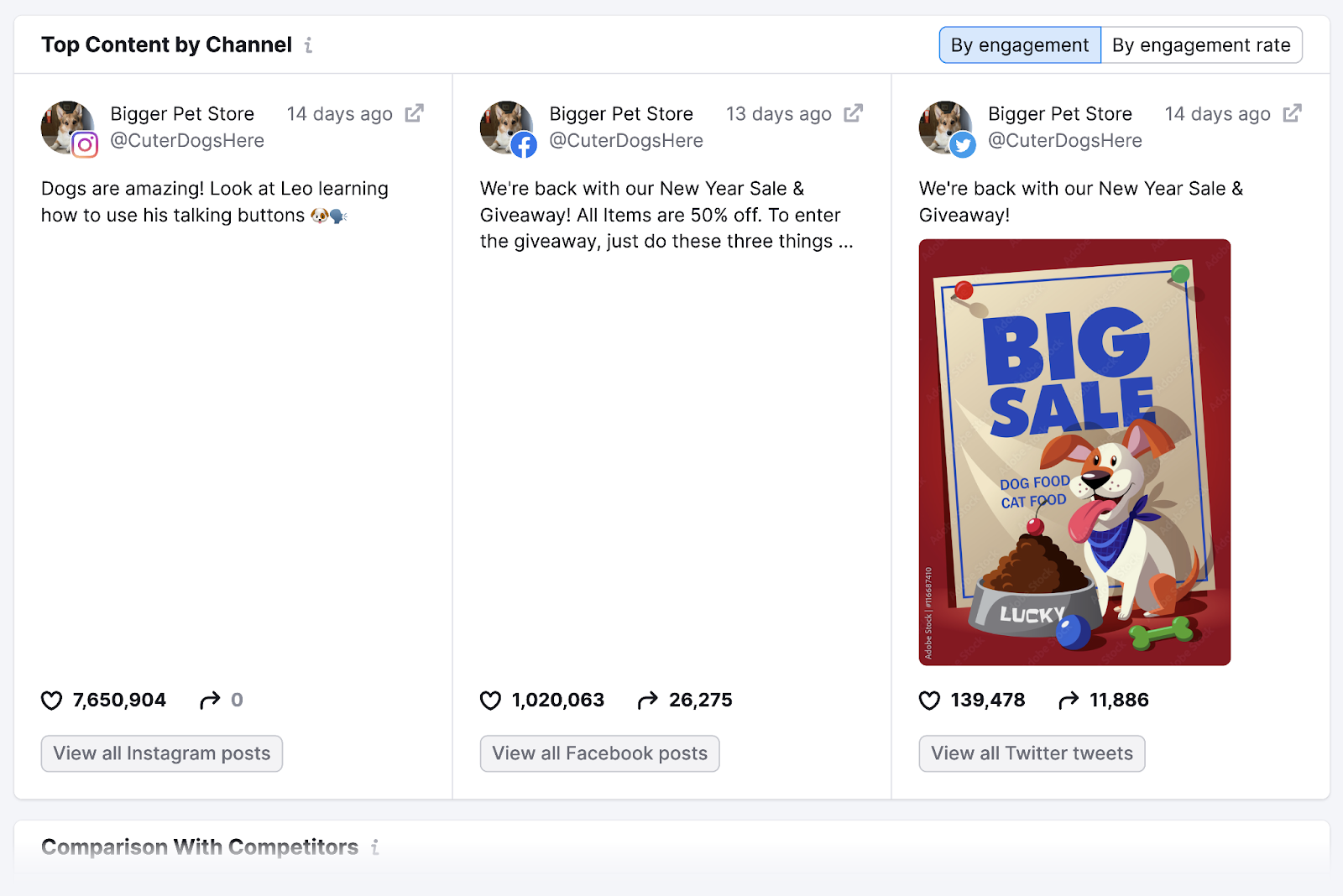
4. Assign Tasks (and Set Deadlines)
Unless you’re a one-person team, you’ll need to assign tasks and deadlines to organize the content development process. This is an important step to improve your content planning process.
Say you want to create an Instagram video to announce that all purchases in your store get free shipping for a limited time.
Your tasks (and deadlines) could look like this:
- Write video script and Instagram caption
- In charge: Social media manager
- Deadline: September 25
- Edit video
- In charge: Video editor
- Deadline: September 27
- Activate ecommerce coupon
- In charge: Ecommerce manager
- Deadline: September 29
- Publish reel
- In charge: Social media manager
- Deadline: September 29
With Semrush’s Marketing Calendar, you just need to invite your team to your content calendar. Then, you’ll be able to assign tasks to them.
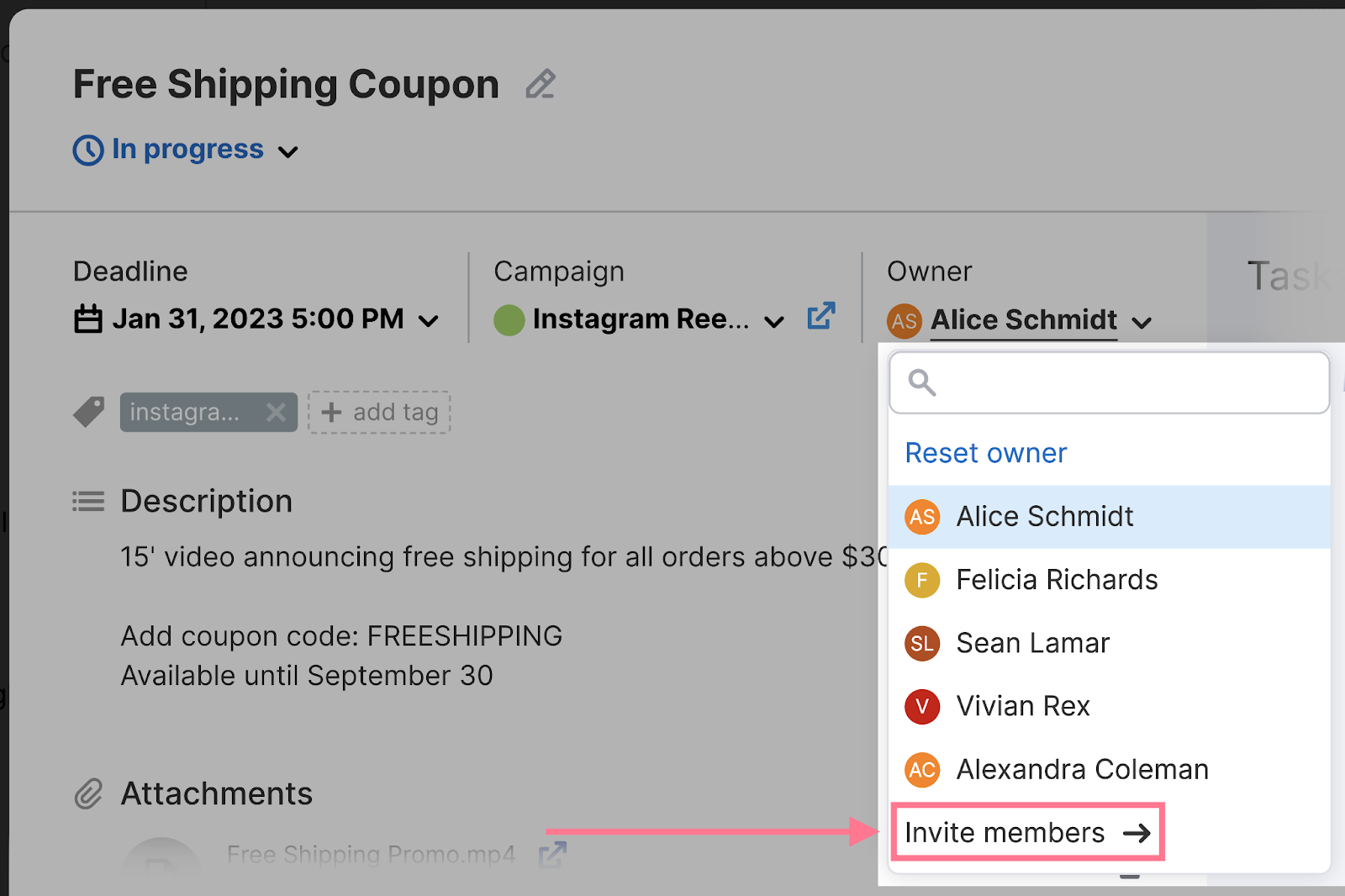
If you’re using a spreadsheet or Google Doc, you can tag users by typing “@” plus their email address into a cell.
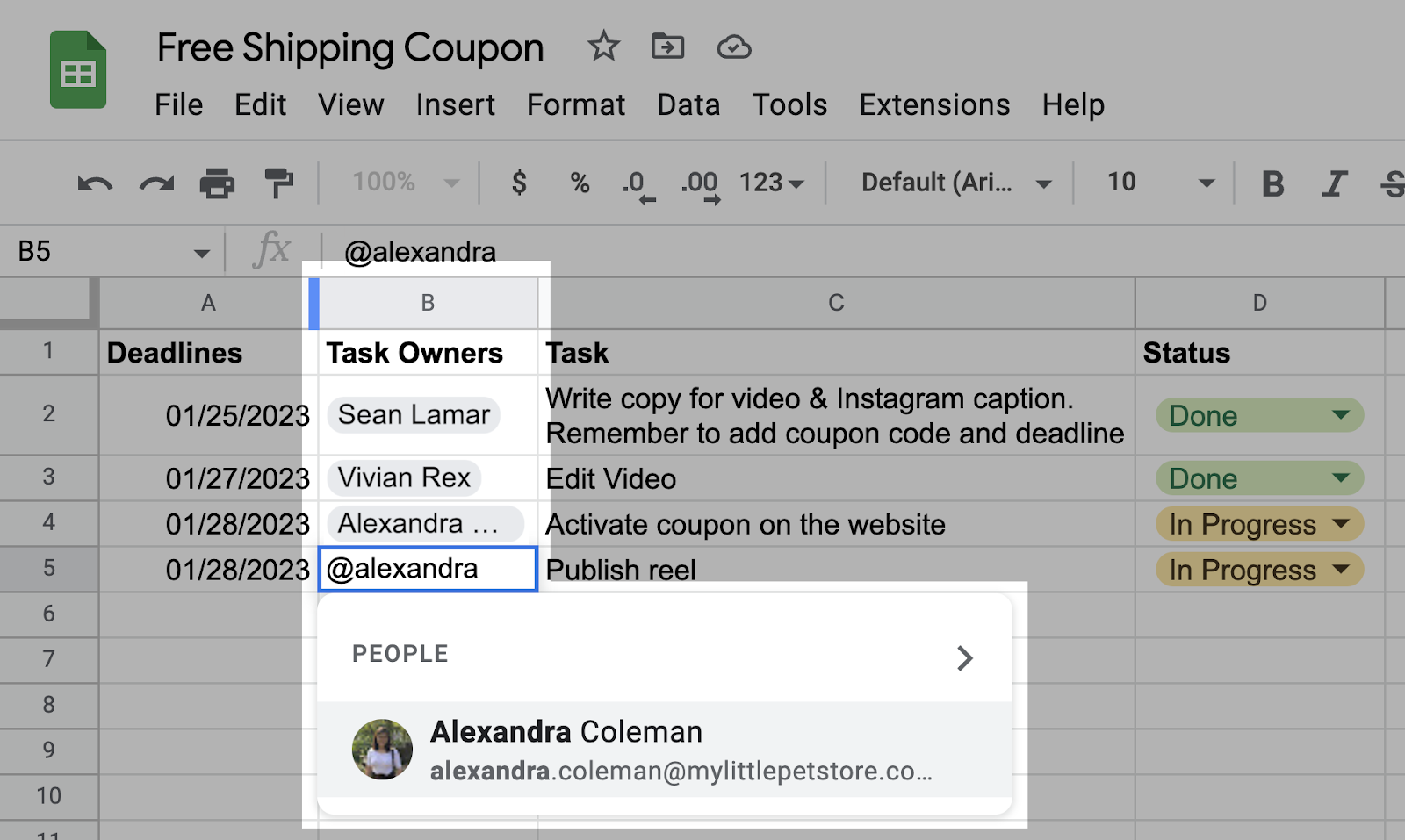
Pro tip: Remember to factor in extra days to compensate for any delay when setting deadlines. This is especially important if you need to receive approvals before publishing.
5. Schedule in Advance
If your distribution channels allow it, it’s a good idea to schedule your content. Scheduling content in advance will help you stay organized and avoid last-minute problems when planning content.
This is especially important for time-sensitive content, such as social media posts or newsletters.
There are many types of content and platforms, each of which has its particularities regarding content scheduling.
Some channels that have built-in scheduling features are:
- Facebook business
- Instagram business
- Pinterest business
- LinkedIn company pages
- YouTube
- WordPress
- Anchor
- Most email marketing tools, such as Mailchimp and Substack
With Semrush’s Social Media Poster, you can schedule posts for Twitter, Pinterest, Instagram, Facebook, and LinkedIn company pages (and Google Business Profile). All from a single dashboard.
To set up the tool, you’ll need to connect your social media profiles.
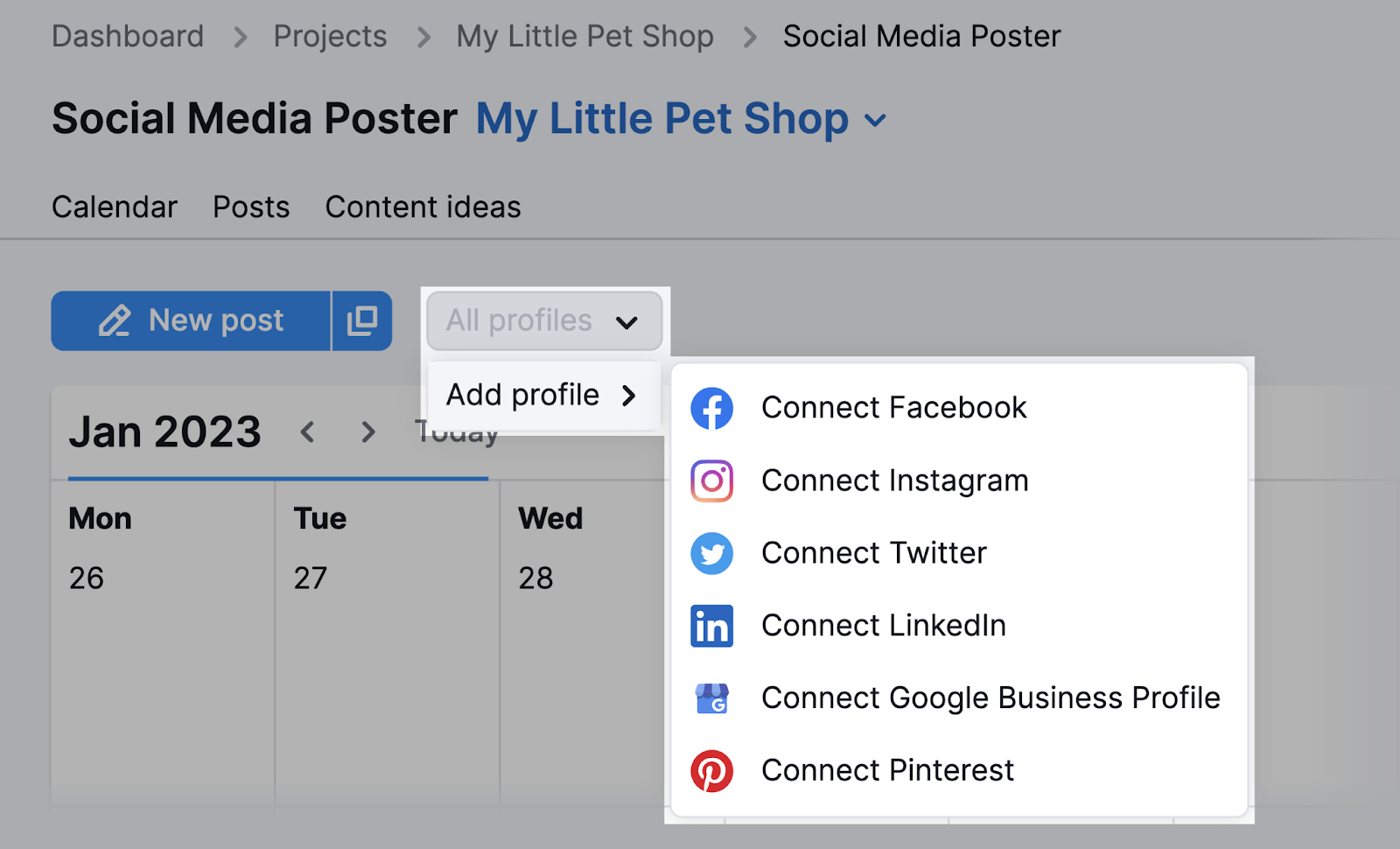
Then, you just need to click on “New post.”
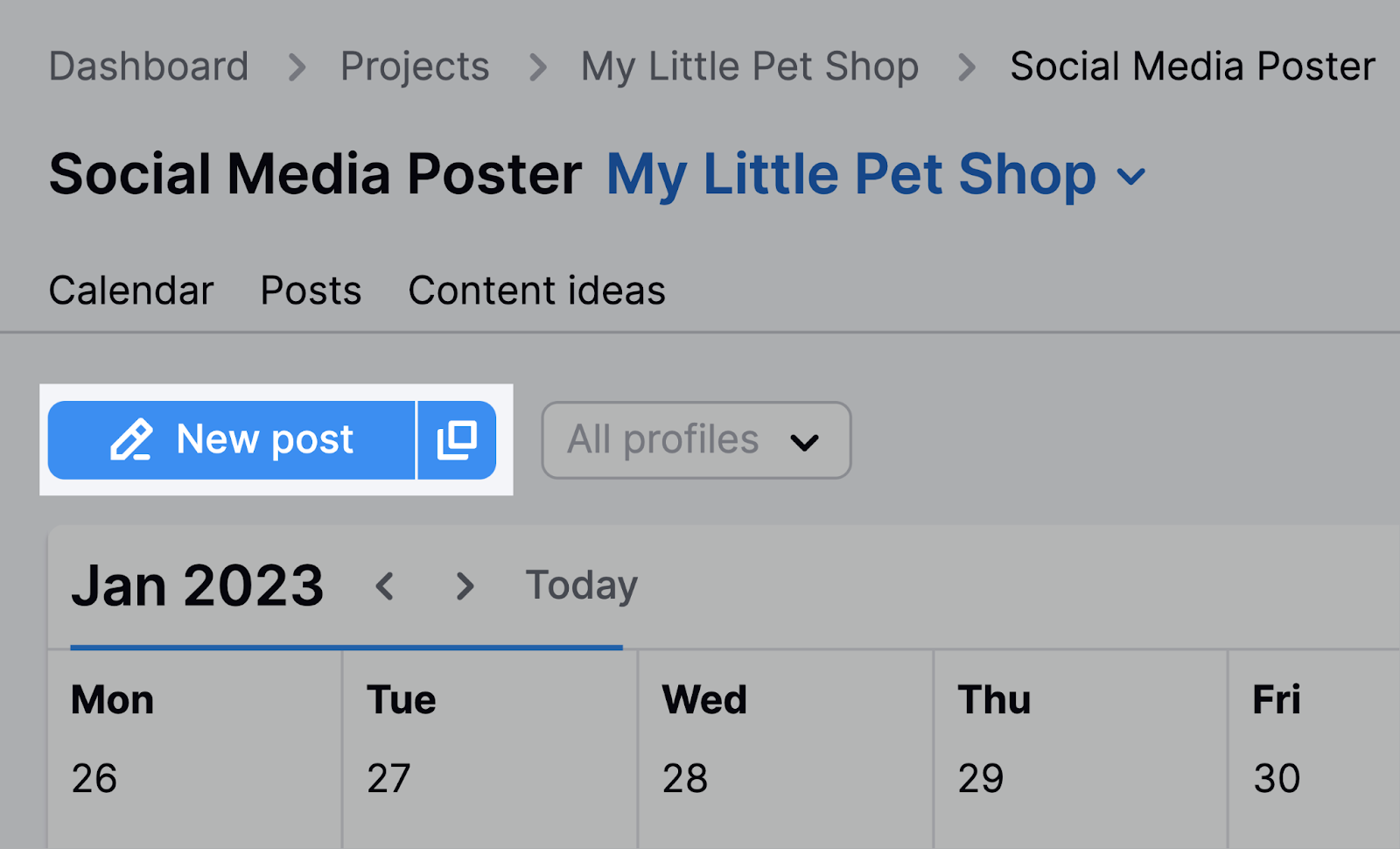
And fill out the information in the form that appears. The tool will publish your post for you at the right time.
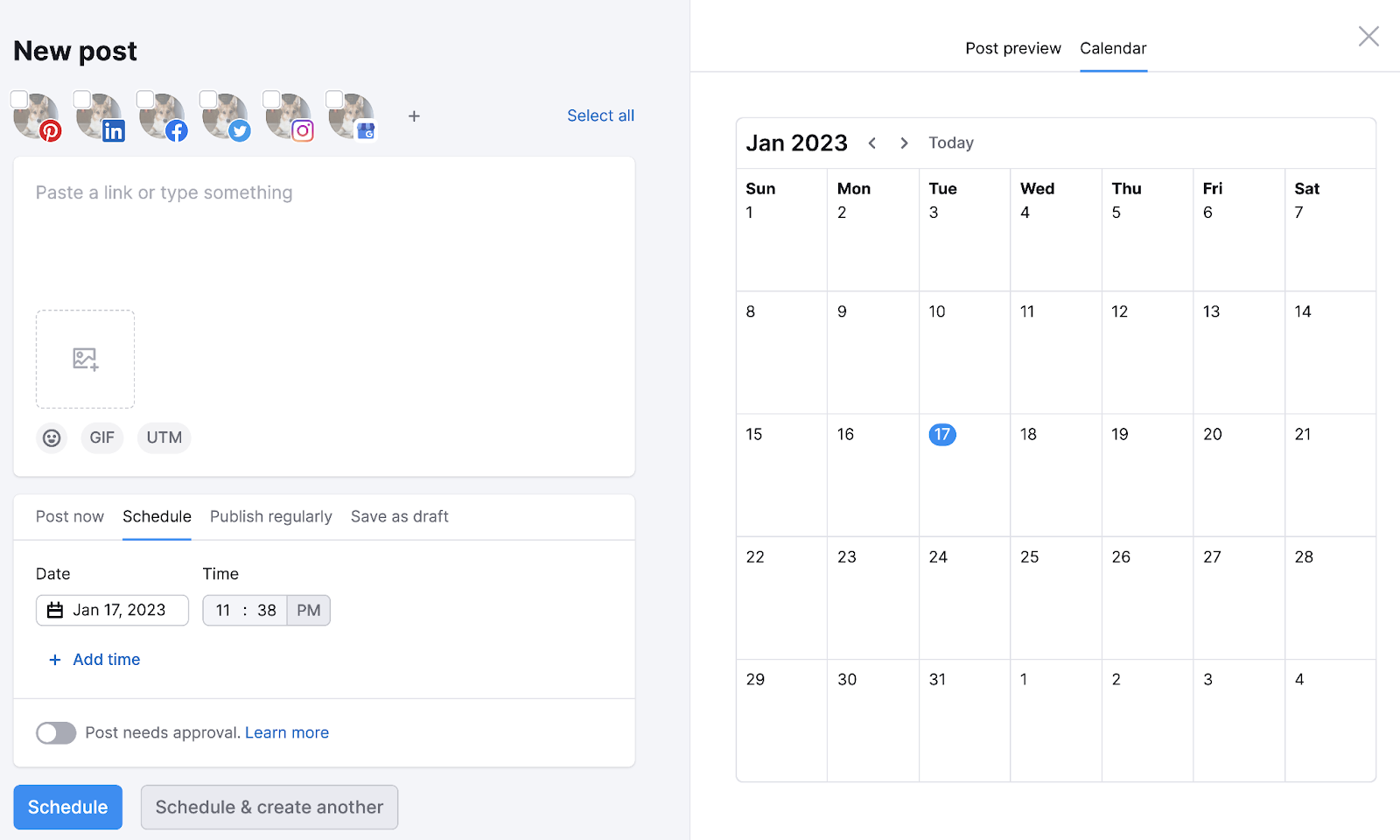
Pro tip: If you already have your content plan in a spreadsheet and want to speed things up, you can use the bulk scheduling feature. Just click on “Bulk scheduling” and upload your CSV.
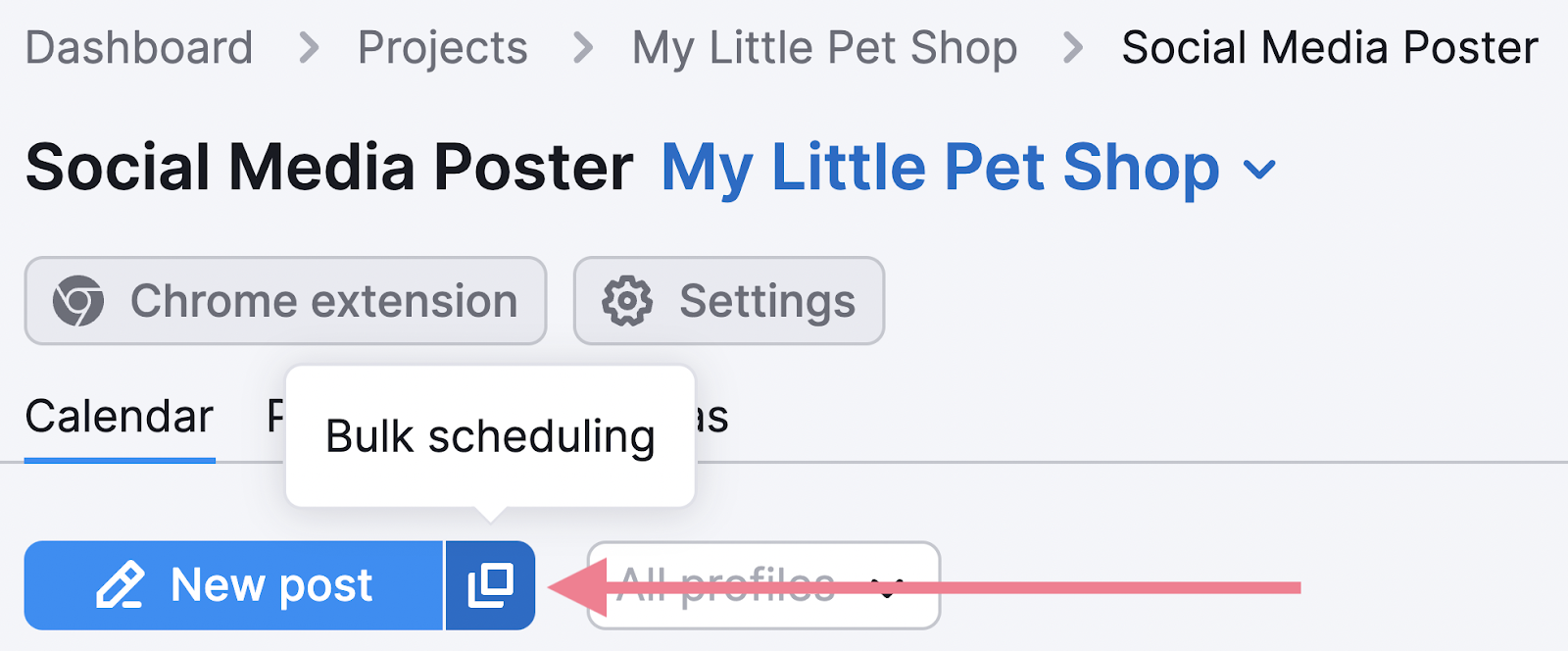
6. Measure the Results
Content planning is an ongoing task. Over time, you need to know what’s working and improve your strategy.
So, how do you measure your results?
First, you need to monitor your overall content marketing goals.
(If you’re unsure about what those look like, a content marketing goal could be to increase lead generation by 15% in three months.)
These goals are part of your content strategy and should shape all your marketing efforts.
But there’s more you should be looking at.
To make sure you reach your overall goals, you must monitor how each content piece performs.
This will help you understand what’s working and what’s not. And react accordingly.
But remember that metrics are different for each type of content.
Some examples are:
For Social Media Content
- Reach
- Impressions
- Engagement (likes, shares, comments)
- Follower growth
For Blog Posts
- Page views
- Average time on page
- Bounce rate
- Backlinks
For Podcasts
- Listeners
- Downloads
- Average listening time
- Reviews
Check this article to learn more about content marketing metrics.
Integrating Semrush’s Marketing Calendar with your Google Analytics account allows you to create campaigns and check your metrics.
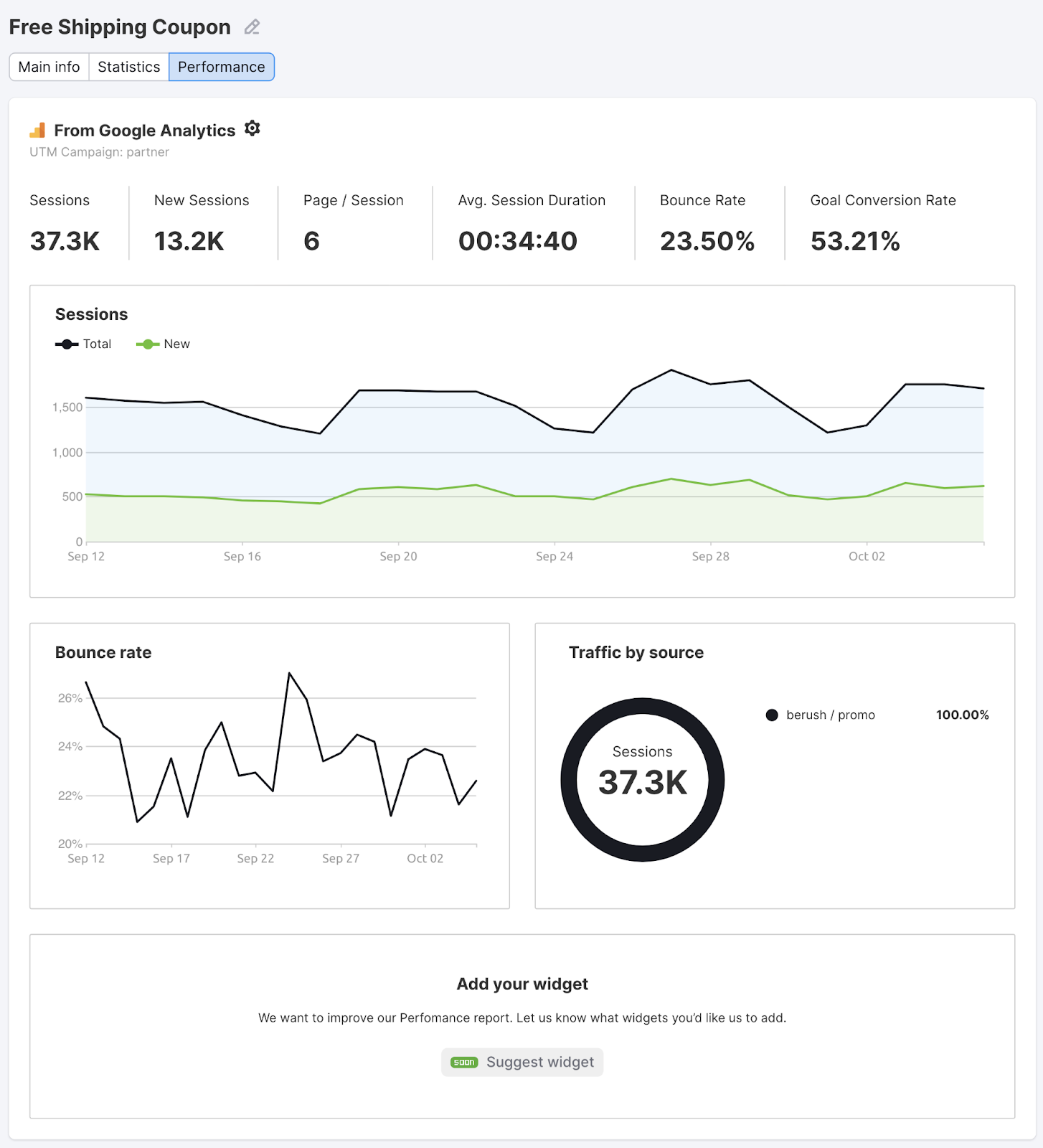
Here’s a step-by-step guide to help you set that up.
You can also connect your Facebook, Instagram, and LinkedIn profiles to Semrush’s Social Media Analytics tool.
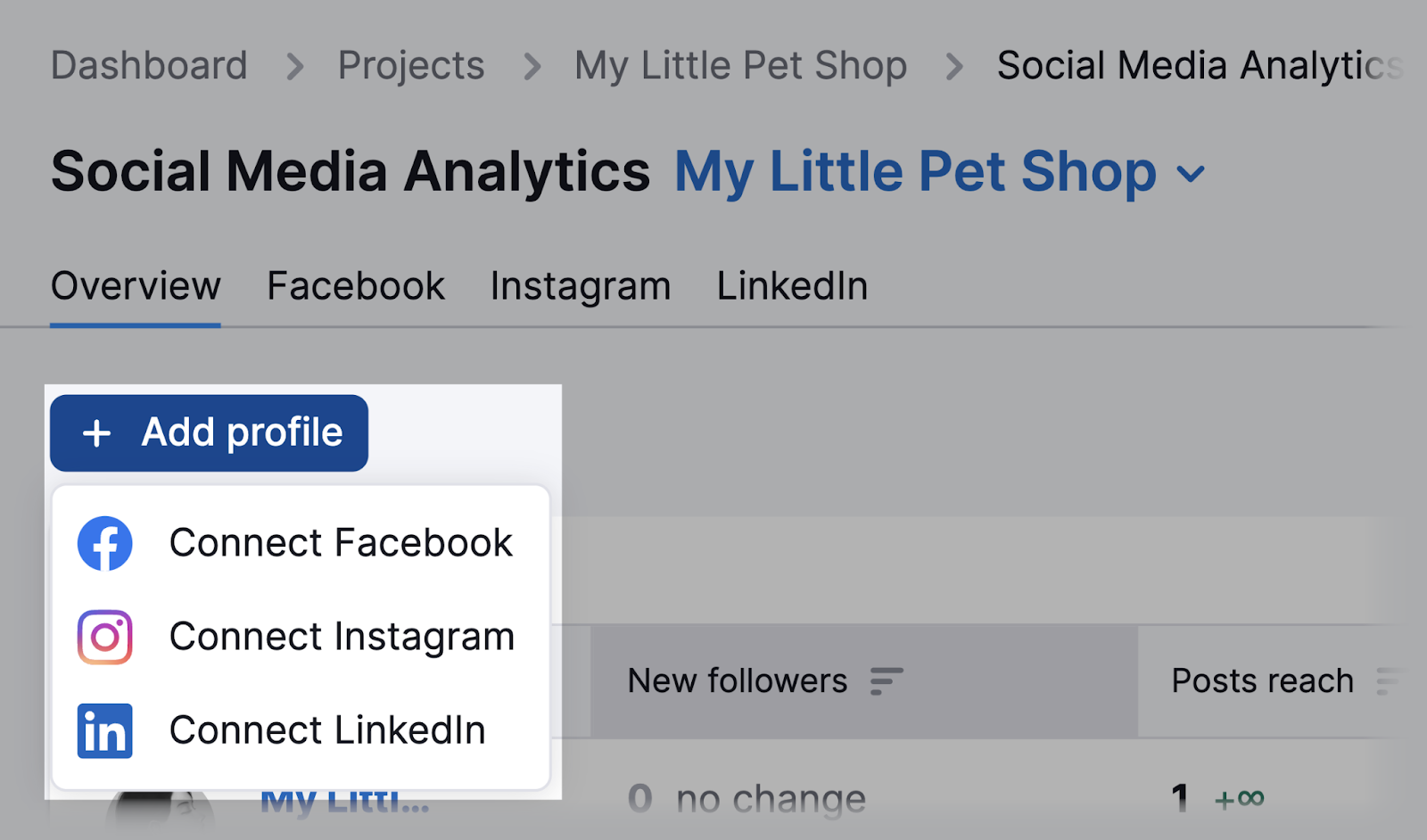
Build Your First Content Plan
Ready to start your content planning process? Download our content calendar template to keep everything on schedule.
Or you can use Semrush’s Marketing Calendar tool to access professional features.
Looking to learn more?
Check out our resources and expand your content marketing skills:

